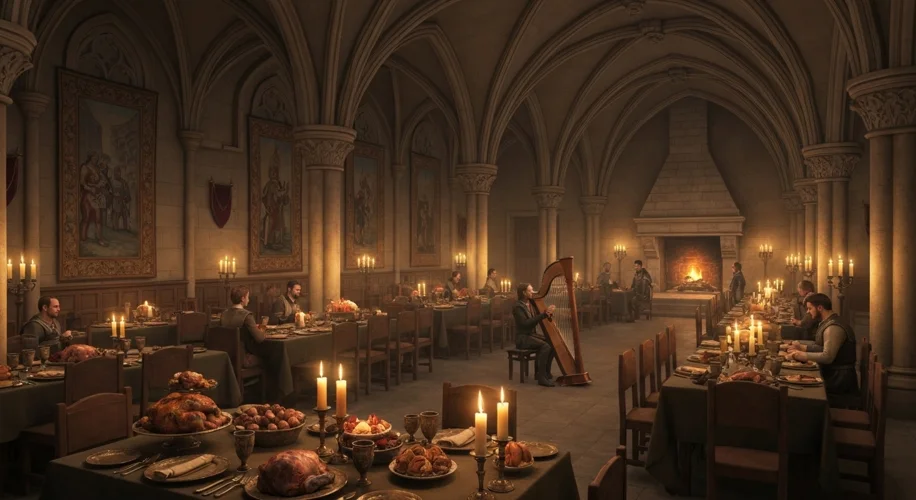The chilling narrative of “A Song of Ice and Fire” is punctuated by acts of kinslaying, where characters turn their blades upon their own blood. This grim theme, particularly the infamous “Red Wedding,” might feel like a brutal invention of modern fantasy. However, the deep-seated human capacity for betrayal and the abhorrence of shedding kindred blood have echoed through millennia of European history and mythology.
The very concept of kinslaying, the murder of a relative, was a profound taboo across many ancient and medieval European societies. In the Germanic tribes, for instance, the bonds of kinship were paramount. Loyalty to one’s family and kin group was not just a social expectation but a cornerstone of survival. To kill a kinsman was to shatter the very fabric of this society, inviting divine retribution and universal condemnation. The concept of ‘Wergild’—a monetary compensation for injury or death—underscores this. While Wergild existed for the death of any free man, the amount paid for the murder of a kinsman was often higher, reflecting the gravity of the offense and the disruption it caused.
Norse mythology, a rich tapestry of gods and heroes, offers potent examples of the dire consequences of kinslaying. The story of Sigurd, the dragon-slayer, is tragically intertwined with familial betrayal. His foster father, Regin, manipulated him into killing his own brother, Fafnir, who had transformed into a dragon to guard his ill-gotten treasure. While Fafnir was arguably a villain in his own right, the act of one brother killing another, driven by greed and ambition, sent ripples of doom through the Volsung saga.

In the epic poem “Beowulf,” the warrior Hrothgar’s nephew, Hæðcyn, accidentally kills his own brother, Herer in a hunting mishap. Though unintentional, the act is still framed as a devastating tragedy, leading to further bloodshed and vengeance. These tales were not mere entertainment; they served as cautionary narratives, reinforcing societal norms and exploring the complex interplay of fate, honor, and the destructive potential of unchecked ambition.
The concept of the blood feud, a cycle of retaliatory violence between kin groups, is intrinsically linked to kinslaying. When a member of one family was killed, it was the duty of their kin to avenge their death, often by killing a member of the perpetrator’s family. While this could extend to non-relatives, the initial spark of a feud often involved a transgression against a kinsman. This could escalate into prolonged periods of violence, destabilizing entire regions.
Even in the more structured societies of medieval Europe, the shadow of kinslaying lingered. Oaths of fealty and loyalty were sacred, and their violation, especially when involving kin, carried immense weight. Historical accounts, though often dramatic, hint at the deep-seated fear and moral revulsion associated with such acts. The violation of the sanctity of blood ties was seen as an affront to both the natural order and divine law. While overt, widespread kinslaying was thankfully rare due to the severe repercussions, the very existence of laws and extensive social taboos against it speaks volumes about its perceived threat.
The fictional kinslaying in “A Song of Ice and Fire,” particularly the “Red Wedding,” draws upon these ancient fears and traditions. It amplifies the horror by demonstrating the complete breakdown of trust and honor within familial structures. The fictional setting allows for an exploration of these themes in their most extreme and visceral forms, reminding us that while the specific events are fantasy, the underlying human emotions—betrayal, ambition, the sanctity of kinship, and the horror of breaking sacred bonds—are as old as civilization itself. These stories, both real and imagined, serve as potent reminders of the delicate balance between loyalty and treachery, and the devastating consequences when the bonds of blood are irrevocably broken.

